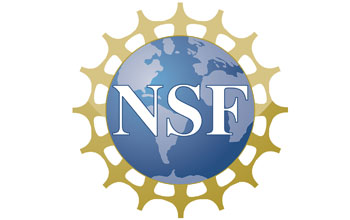
Research News
Insight into laser frequency combs improves understanding of natural phenomena and promises advances in technology
July 11, 2019
Nature has a way of finding optimal solutions to complex problems. For example, despite billions of ways for a single protein to fold, proteins always fold in a way that minimizes potential energy. Slime mold, a brainless organism, always finds the most efficient route to food, even when presented with an obstacle. A jump rope, when held on both ends, always winds up in the same shape, a curve known as catenary.
That kind of optimization is explained by what’s known as a variational principle: any other variation of the shape found by the protein, mold or jump rope would require more energy.
Now NSF-funded researchers at Harvard University have found that some lasers use the same principle. The research is described in Physical Review Letters.
Frequency combs are widely-used, high-precision tools for measuring and detecting different frequencies — colors — of light. Unlike conventional lasers, which emit a single frequency, these lasers emit multiple frequencies in lockstep, evenly spaced to resemble the teeth of a comb.
When a laser produces a frequency comb, it emits light waves that repeat themselves periodically. Depending on the parameters of the comb, these waves can have a constant intensity while varying in color, or they can look like short pulses of light that build and drop in intensity.
Researchers know how combs produce pulses, but how so-called frequency-modulated lasers maintain a constant intensity in the face of changing frequencies has been a long-lasting puzzle.
The researchers, led by Federico Capasso, reconstructed the waveform emitted by light sources known as quantum cascade lasers, widely used in spectroscopy and sensing. They found that the lasers choose to emit light waves that not only suppresses intensity fluctuations — leading to a constant intensity in time — but also maximizes power output.
The research is funded by NSF’s Directorate for Engineering.
“Fundamental insights into laser technologies, like this frequency-modulated laser, promise ultra-broadband, high power, and precise light sources for us to understand our world and — in the future — advanced molecular spectroscopy, new technologies for atomic clocks, GPS, astronomy, and many other applications,” said Ruyan Guo, NSF program director for Electronics, Photonics and Magnetic Devices.
—
NSF Public Affairs,
(703) 292-8070 media@nsf.gov
Source: NSF News
Brought to you by China News






